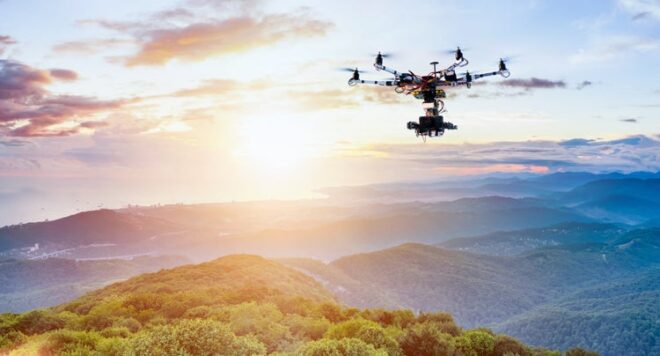How Do I Shoot Drone Photos Of Natural Landscapes?
Have you ever marveled at stunning aerial photos of natural landscapes and wondered how you could capture similar images with your drone? In this article, we will guide you through the process of shooting drone photos of natural landscapes. From choosing the right equipment to mastering composition techniques, you will learn everything you need to know to capture breathtaking aerial shots of nature.
Choosing the Right Drone
The first step in shooting drone photos of natural landscapes is selecting the right drone for the job. When choosing a drone for landscape photography, consider factors such as camera quality, flight time, and stability. Look for a drone with a high-resolution camera, long battery life, and advanced stabilization features to ensure crisp and clear aerial shots.
Camera Settings for Landscape Photography
Once you have chosen the right drone, it’s essential to configure the camera settings for capturing stunning landscape photos. Set your camera to shoot in RAW format to retain maximum image quality and flexibility in post-processing. Adjust the ISO, shutter speed, and aperture settings based on the lighting conditions and desired effect.
Finding the Perfect Location
The key to capturing captivating drone photos of natural landscapes is finding the perfect location. Look for scenic spots with interesting terrain, textures, and colors that will add depth and visual interest to your photos. Explore different locations and angles to find the best vantage points for capturing breathtaking aerial shots of nature.
Composing Your Shots
Composition plays a crucial role in creating visually compelling drone photos of natural landscapes. Use the rule of thirds to frame your shots and create a sense of balance and harmony. Experiment with different angles, perspectives, and framing techniques to add depth and dimension to your aerial photos. Incorporate leading lines, symmetry, and patterns to guide the viewer’s eye through the scene and create a sense of movement and flow.
Lighting Conditions
Lighting is one of the most important factors in landscape photography, including drone photography. Pay attention to the quality, direction, and intensity of light when shooting aerial photos of natural landscapes. Golden hour, early morning, and late afternoon are ideal times for capturing soft, warm, and dramatic lighting that will enhance the beauty of the landscape. Avoid shooting in harsh midday sunlight, as it can create harsh shadows and washed-out colors in your photos.
Editing Your Photos
Post-processing is an essential step in perfecting your drone photos of natural landscapes. Use editing software such as Adobe Lightroom or Photoshop to enhance colors, contrast, sharpness, and clarity in your aerial shots. Adjust exposure, white balance, saturation, and other settings to achieve the desired look and style for your landscape photos. Experiment with different editing techniques and presets to bring out the beauty and details of the natural landscape in your aerial photos.
Understanding Drone Regulations
Before you embark on shooting drone photos of natural landscapes, it’s crucial to understand and follow drone regulations in your area. Familiarize yourself with the rules and restrictions governing drone flight, altitude limits, no-fly zones, and privacy concerns. Obtain the necessary permits, licenses, and permissions to fly your drone legally and responsibly in public parks, nature reserves, and other protected areas. Respect the environment, wildlife, and other visitors while capturing aerial photos of natural landscapes with your drone.
Safety Tips for Drone Photography
Safety should always be a top priority when shooting drone photos of natural landscapes. Follow these tips to ensure a safe and successful aerial photography session:
- Always conduct a pre-flight checklist to inspect your drone, batteries, controller, and other equipment for any issues or malfunctions.
- Maintain line of sight with your drone at all times to avoid collisions with obstacles, other drones, or aircraft.
- Keep a safe distance from people, animals, buildings, and other objects while flying your drone to prevent accidents and injuries.
- Be mindful of weather conditions such as wind, rain, snow, and extreme temperatures that can affect your drone’s performance and stability.
- Avoid flying your drone near airports, military installations, power lines, and other high-risk areas where drone flight is prohibited or restricted.
Sharing Your Drone Photos
Once you have captured stunning aerial photos of natural landscapes, don’t keep them to yourself – share them with the world! Showcase your drone photos on social media platforms, photography websites, and online galleries to inspire and connect with other photography enthusiasts. Join drone photography communities, contests, and exhibitions to gain exposure, feedback, and recognition for your work. Collaborate with other photographers, artists, and organizations to promote your drone photos and raise awareness about the beauty and importance of natural landscapes.
Conclusion
Shooting drone photos of natural landscapes is a rewarding and fulfilling experience that allows you to explore, appreciate, and capture the beauty of nature from a unique perspective. By choosing the right equipment, mastering camera settings, finding the perfect location, composing your shots, understanding lighting conditions, editing your photos, following drone regulations, practicing safety tips, and sharing your work, you can create stunning aerial photos that showcase the splendor and diversity of natural landscapes. Embrace the endless possibilities of drone photography and unleash your creativity to capture breathtaking aerial shots of nature that will inspire and awe viewers around the world.

